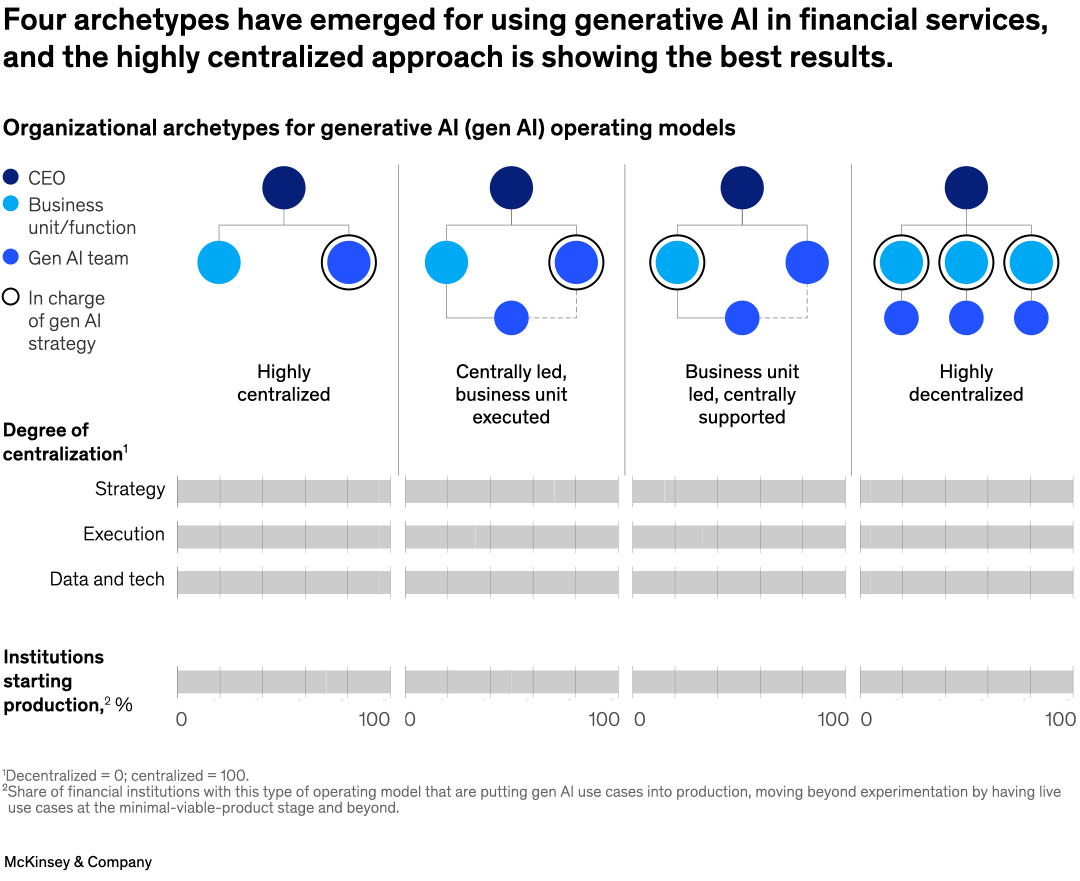Across the global banking sector, generative (gen AI) could add between $200 billion and $340 billion in value annually, largely through increased productivity, according to senior partner Kevin Buehler and coauthors. As banks and other financial institutions implement the technology, four organizational archetypes have appeared, ranging from highly centralized to highly decentralized. In a study of 16 of the largest financial institutions across Europe and the United States, more than 50 percent are opting for a more centralized approach, though structures are likely to become more decentralized in the longer term, as use of the new technology matures.

Image description:
A 3-part graphic compares 4 organizational archetypes for generative AI (gen AI) use in financial services. The archetypes are highly centralized; centrally led, business unit executed; business unit led, centrally supported; and highly decentralized. The chart shows the degree of centralization across 3 segments: strategy, execution, and data/tech. It also shows, for each archetype, the percentage share of financial institutions with gen AI use cases in production. Those results are: highly centralized at 75%; centrally led, business unit executed at 50%; business unit led, centrally supported at 50%; and highly decentralized at 30%.
End of image description.
To read the article, see “Scaling gen AI in banking: Choosing the best operating model,” March 22, 2024.